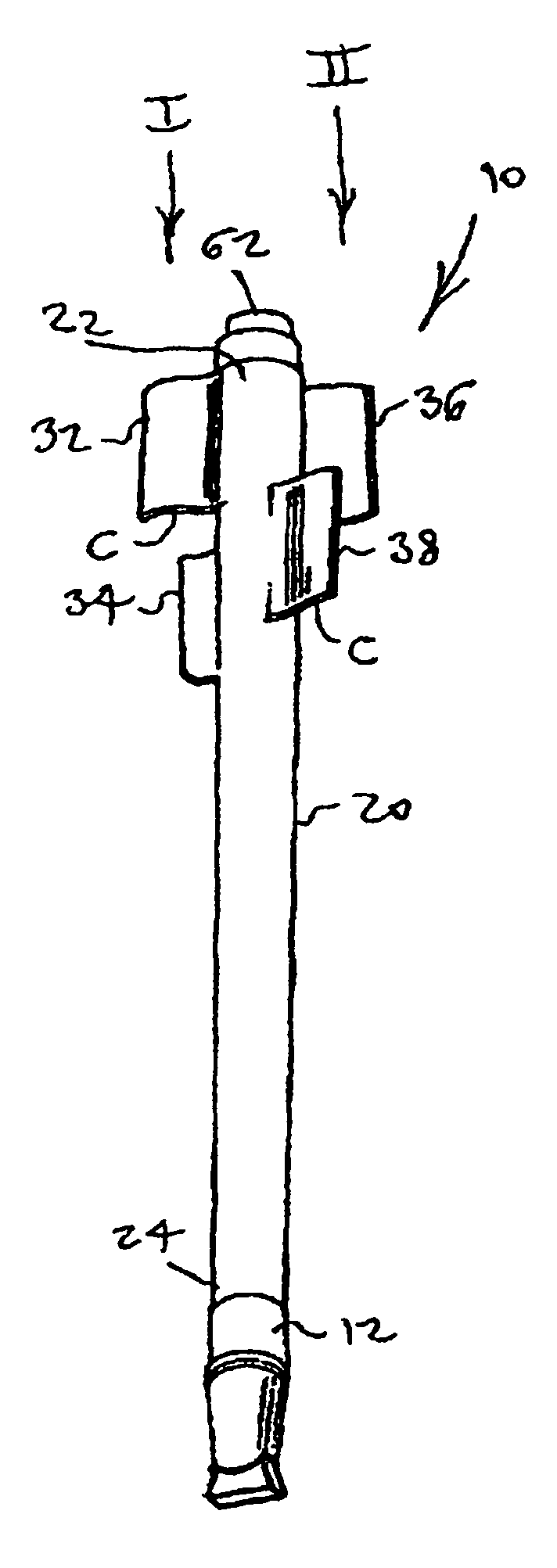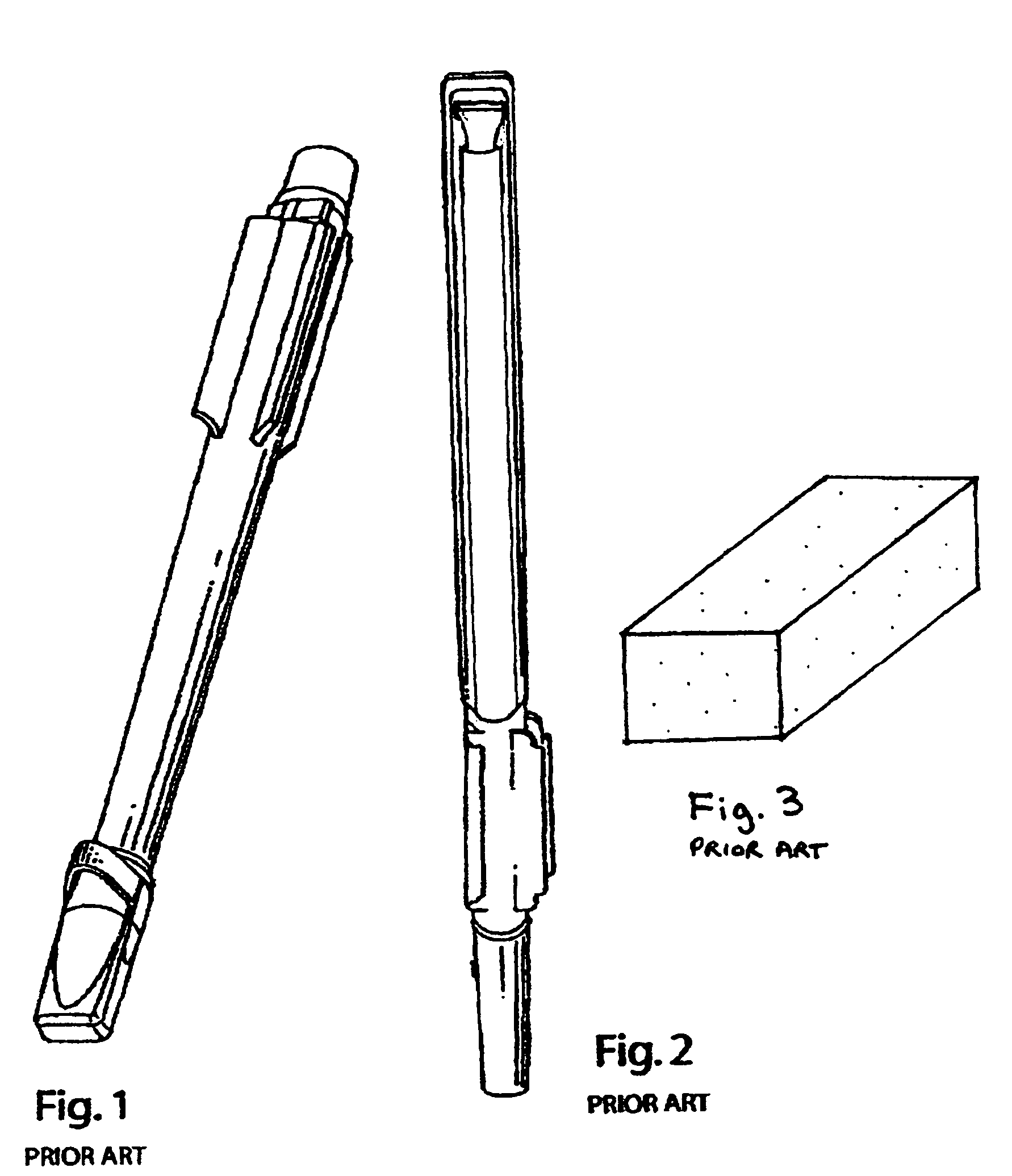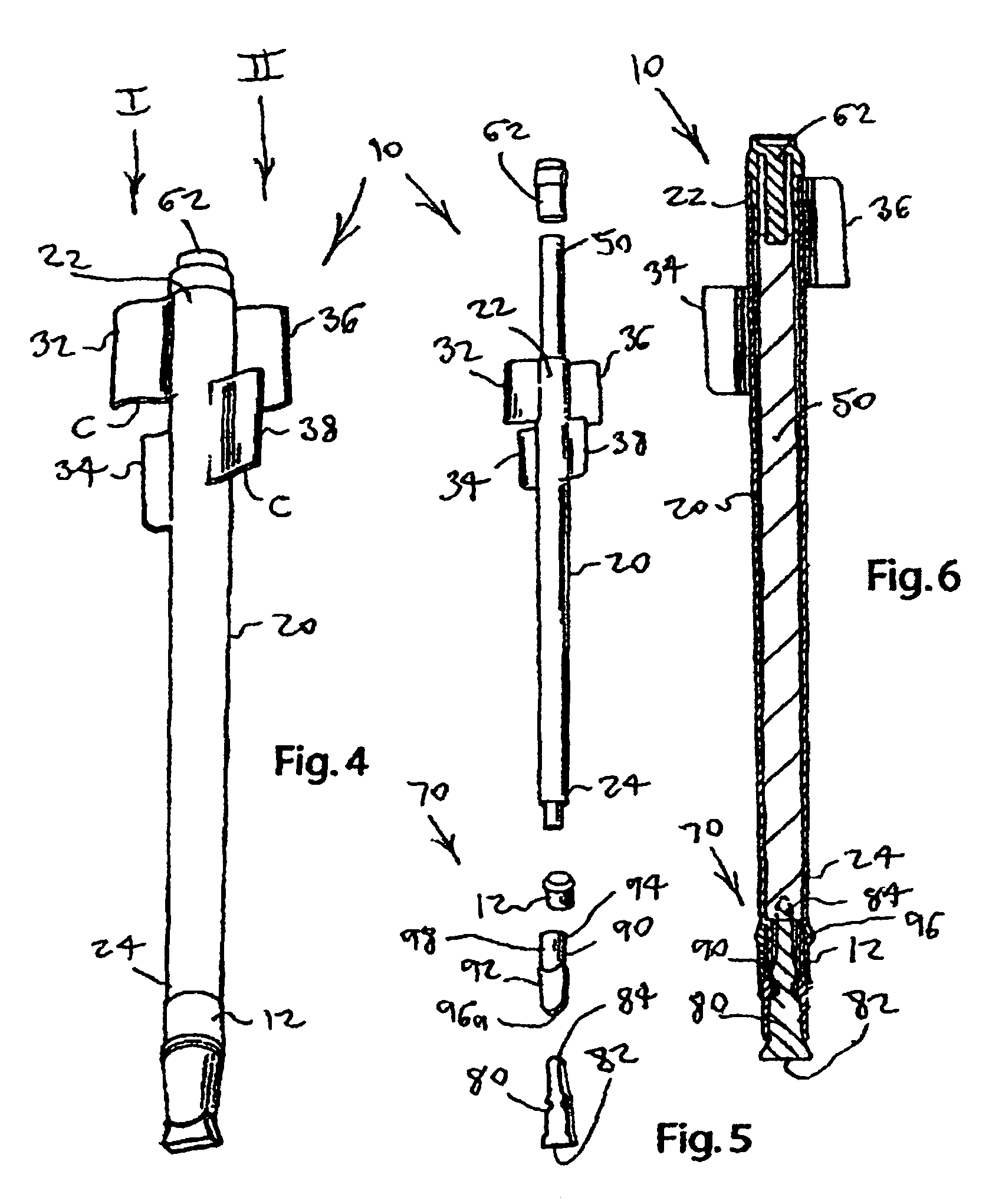One cannot draw multi-color lines, either with spaces of contiguous, with these markers due to the flangular cap only being able to fit onto the nib end of the marker.
This means is the most commonly seen one for connecting markers together, but there has not been proposed a means of connection that overcomes the need for a male and female part on opposite sides of markers, and that obviates the need for people to look carefully at the markers, determine which sides fit together and perhaps have to turn one of the markers around in order to mate them correctly.
However, it requires a long rod to be inserted in the mould to form the void in the cap which is difficult to prevent from moving as the plastic is being injected, thus resulting in slightly asymmetrical caps.
However, the rigidity and
high density of each marker becomes an undesired factor when used with markers from previous applicant U.S. Pat. No. 6,554,517 that discloses modular multi-color markers and markers with variable nibs.
The
full width of their tips do not always fully contact the paper enough to lay down lines of the intended width because the manufacturing or assembling of the product is not completely perfect.
Even though this unevenness of the nibs may be so small that it is difficult to detect with the
naked eye, it results in uneven lines with broad gaps between them.
Also, upon normal usage, the outermost nibs wear away faster than the centermost nib, resulting in only two lines being able to be drawn at one time.
If the nibs were soft enough, one could apply
a moderate amount of pressure and have all of the nibs fully contact paper, but because the nibs are rigid plastic one would have to apply an extraordinary amount of pressure which would make it impossible to write, draw or paint normally.
However, applicant has found that due to the many variables in molding the plastic parts of multi-color markers, slight imperfections in the manufacture of the nibs, and the markers, final
assembly, the nibs rarely lined up perfectly for contiguous lines.
However, her work utilizes Fold Art™ acrylic paints which are high
viscosity and would not easily flow through the other types of material for brushes.
Other foam and
sponge painting devices are
low density and are typically used for high
viscosity paints such as acrylics and so are very soft and tend to release too much low
viscosity ink or paint when pressed onto paper with the same amount of pressure one normally uses to apply
acrylic paint, or when strokes are applied slowly.
They are able to hold and release low viscosity ink and paint well on its surface, but do not have a natural wicking ability to absorb fluid into its pores.
It also has a rubbery, high friction surface that squeaks when there is not enough fluid to lubricate it when stroked on paper.
This
sponge, as well as
low density ones and foam brushes are not very durable as they tend to tear easily.
However, it is apparent from testing that all of these materials have serious drawbacks.
Felted fiber shoe inserts usually are not as compressed or tightly needled as hat felt, resulting in easily fraying edges.
Therefore, it typically does not have the proper characteristics for taking up and dispersing ink or paint, which have viscosity and
surface tension near that of water.
Although the best prior art material we found for multi-color painting is
wool felt for hats, it has never been manufactured in a convenient form specifically for painting.
The first is that
wool is hydrophobic and does not wick water-based paint or ink well unless treated with a surfactant, second, recent environmental regulations have made the process of producing
wool felt nibs more costly; third, wool is being replaced by the less expensive, more versatile variety of synthetic fibers.
However, these markers have been designed to apply only one color of ink or paint at a time.
Their nibs are too soft for multi-color marking because the
low density fiber structure means larger voids, where different colors of ink quickly intermingle and the nib becomes “muddy”.
Also, the means of dispensing ink in these prior art kits is unsuitable or tedious for the purpose of quick, accurate,
multiple applications of paint to the
brush for prolific painting.
The drawback of Gruenig's paint dispensing
system is that a user requires two hands—one to hold the
sponge and the other to squeeze a minute amount of paint from the
bottle onto the desired area of the sponge.
The method of
wetting to soften and loosen the paints is too time-consuming to be seriously considered for applicant's painting purposes.
This
system works well for adult professional artists, but is not easily obtainable, due to cost restraints and availability, to the general public market.
When the
solvent and / or water in the paint evaporates, the paint becomes too viscous for the wicking action, and clogs the brushes' pores.
There are several reasons for this: for one, the very fine particle-size, highly pigmented paint that is traditionally used for this
system is expensive and difficult to obtain, being used mostly by only a few people for this specific application and for high quality airbrush work.
The best paint, however, is actually watercolor ink or dye which is used in marking pens, and which is not sold except as part of marking pens, and the quantities of ink in them are not sufficient to make it worth the trouble to
cut open a marker and extract the ink.
However, these inks and dyes are too diluted for the bright colors needed for
rainbow name art.
A second reason that a kit such as this has not been invented is because small, fluid-tight containers of the right size, with small neck openings and with a cap that will cover the wick but not push it down into the opening are difficult to find.
The user then has the job of pulling the wick out of the opening, which typically means getting
tweezers, fingers or other pointed gripping object, dirty.
 Login to View More
Login to View More  Login to View More
Login to View More 


